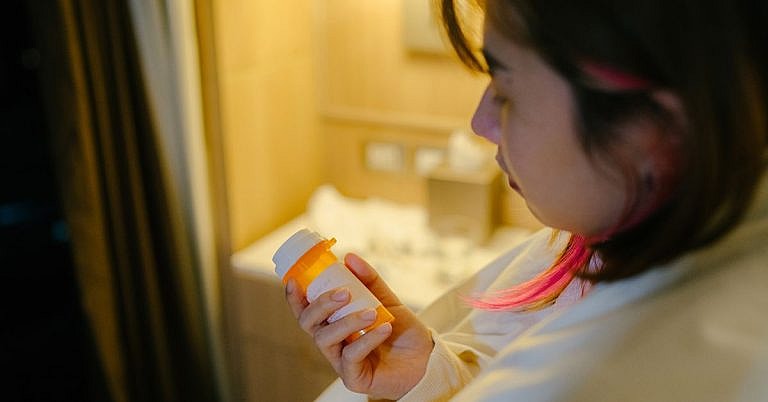Epkinly Dosage: Form, Strengths, How It’s Given, and More
Epkinly DOSAGE (epcoritamab-bysp) is a prescription drug used to treat diffuse large B-cell lymphoma (DLBCL) in some adults. The drug is given as an injection under your skin, with dosage based on treatment cycles.
Epkinly is prescribed to treat DLBCL, a form of non-Hodgkin’s lymphoma. The drug is used after two systemic treatments* have been tried and either they didn’t work or the cancer returned.
Note: Epkinly has received accelerated approval from the Food and Drug Administration (FDA) for this use based on early studies. Full approval is typically granted after further studies have been completed. If you have questions about this, talk with your doctor.
The active ingredient in Epkinly is epcoritamab-bysp.† (An active ingredient is what makes a drug work.) Epkinly belongs to a group of drugs called bispecific CD20-directed CD3 T-cell engages.
It’s a biologic drug made from living cells. Epkinly comes as a liquid solution that’s given as an injection under the skin by a healthcare professional.
This article describes the dosages of Epkinly, as well as its strengths and how it’s given. To learn more about Epkinly, see this in-depth article.
* “Systemic” refers to a treatment that affects the whole body, and includes medications you swallow or inject.
† * The reason “-bysp” appears at the end of the drug’s name is to show that it’s distinct from similar medications that may be created in the future.
FDA warnings widget: Boxed warnings
Epkinly has boxed warnings about the risk of cytokine release syndrome (CRS) and immune effector cell-associated neurotoxicity syndrome (ICANS). A boxed warning is the most serious warning from the Food and Drug Administration (FDA). It alerts doctors and patients about drug effects that may be dangerous.
CRS: Treatment with Epkinly may cause a serious side effect called CRS. This is a condition in which your immune system releases large amounts of proteins called cytokines into your bloodstream. In rare cases with a severe reaction, CRS can lead to organ failure and even death. Symptoms of CRS include fever, difficulty breathing, low blood pressure, and a fast heart rate.
To help reduce your risk of CRS, your doctor will prescribe certain pre-treatment medications. They’ll start you on a low dosage of Epkinly to see how you respond to treatment. And they’ll monitor you closely in the hospital for at least 1 day after your first full dose. They may pause or stop your treatment if you develop symptoms of CRS. If you have questions about this side effect, talk with your doctor to learn more.
ICANS: Treatment with Epkinly may cause a serious side effect called ICANS which can cause coma or even death in rare cases. ICANS causes damage to your nervous system. Symptoms may include weakness, fatigue, confusion, problems with memory, difficulty with speech, and seizure. Tell your doctor immediately if you have symptoms of ICANS. They may pause or stop your Epkinly treatment and treat your ICANS symptoms. If you have questions about this side effect, talk with your doctor to learn more.
What is Epkinly’s dosage?
This section describes the usual dosages of Epkinly.
What is Epkinly’s form?
Epkinly comes as a liquid solution that’s given as an injection under your skin by a healthcare professional.
What strengths does Epkinly come in?
Epkinly comes in single-dose vials and is available in two strengths:
What are the usual dosages of Epkinly?
Epkinly is given in 28-day cycles. You’ll receive one, two, or four injections per month depending on the cycle. Your doctor will start you on low step-up dosages of Epkinly when you start treatment.
This is to help lower your risk of side effects such as CRS. They’ll slowly increase your dose until you reach the right dosage for treating your condition.
The information below describes dosages that are commonly used or recommended. Your doctor will determine the best dosage to fit your needs.
Dosage for DLBCL
The dosage of Epkinly for adults with DLBCL is based on 28-day treatment cycles. For the first three cycles, you’ll receive one injection per week.
During cycles four through nine, you’ll receive an injection once every 2 weeks. After that, you’ll receive an injection once every 4 weeks.
You’ll receive step-up doses during your first treatment cycle. These are gradually increased doses to see how you react to the medication. After this, you’ll receive full doses of Epkinly.
| Epkinly treatment cycle | Treatment day | Dosage |
|---|---|---|
| Cycle 1 | Day 1 | 0.16 mg (first step-up dose) |
| Day 8 | 0.8 mg (second step-up dose) | |
| Day 15 | 48 mg (first full dose) | |
| Day 22 | 48 mg | |
| Cycles 2–3 | Days 1, 8, 15, and 22 | 48 mg |
| Cycles 4–9 | Days 1 and 15 (once every 2 weeks) | 48 mg |
| Cycles 10 and beyond | Day 1 (once every 4 weeks) | 48 mg |
Your doctor may prescribe certain pre-treatment medications to reduce your risk of CRS before you receive Epkinly injections. These include corticosteroids, antihistamines, and acetaminophen (Tylenol). They’ll monitor you closely in the hospital for at least 1 day after you receive your first full (48-mg) dose of Epkinly on day 15 of treatment.
Your doctor may adjust your dosage schedule and treatment cycle if needed. They may also pause or stop your treatment with Epkinly if you have serious side effects such as CRS.
If you have questions about your dosage and dosing schedule, talk with your doctor to learn more.
Is Epkinly used long term?
Yes, Epkinly is usually a long-term treatment. If you and your doctor determine that it’s safe and effective for treating your condition, you’ll likely receive it long term.
What factors can affect my dosage?
The dosage of Epkinly you’re prescribed may depend on the side effects you experience. Talk with your doctor to find out whether you’ll need any dosage adjustments for Epkinly.
How is Epkinly given?
Epkinly comes as a liquid solution that’s given as an injection under your skin. Your doctor or another healthcare professional will inject Epkinly into your thigh or lower abdomen. You’ll receive doses in a hospital, clinic, or doctor’s office. Your doctor will monitor you for 1 day in the hospital after you receive your first full dose of Epkinly on day 15 of cycle 1 of treatment.
Your doctor may also give you certain pre-treatment medications including corticosteroids, antihistamines, and acetaminophen (Tylenol). This is to help reduce your risk of CRS.
Talk with your doctor if you have questions about receiving doses of Epkinly.
What if I miss a dose?
If you miss an appointment to receive a dose of Epkinly, call your doctor’s office as soon as possible to reschedule. They’ll give you the missed dose and adjust your dosing schedule if needed.
If you need help remembering your appointments, try downloading a reminder app on your phone.
Frequently asked questions
Below are answers to some commonly asked questions about Epkinly’s dosage.
Is Epkinly’s dosage similar to that of Monjuvi?
No, it’s not. Although the forms and uses of both drugs are similar, there are differences. Epkinly and Monjuvi (tafasitamab-cxix) are both biologic drugs used to treat certain types of B-cell lymphoma. Both are given in 28-day treatment cycles.
Epkinly comes as a liquid solution for injection under the skin by a healthcare professional. Monjuvi comes as a powder that’s mixed into a liquid solution and given as an intravenous (IV) infusion (an injection into a vein given over time). The dosage of Monjuvi is based on your body weight.
The dose in milligrams and the treatment schedule for each drug differs. Your doctor will prescribe the drug and dosage that’s right for you. Talk with them to learn more about how these drugs compare.
How long does it take for Epkinly to start working?
Epkinly starts to work after your first full dose of the medication (day 15 of cycle 1 of treatment). Because of how the drug works, you likely won’t feel it working in your body. Your doctor will monitor you during treatment to be sure the drug is effectively treating your condition.
If you have other questions about what to expect from your Epkinly treatment, talk with your doctor.
What should I ask my doctor?
The sections above describe the usual dosages provided by Epkinly’s manufacturer. If your doctor recommends this drug, they’ll prescribe the dosage that’s right for you. Talk with them if you have questions or concerns about your current dosage. Examples of questions you may want to ask include:
To learn more about Epkinly, see these articles:








Great post! It’s very informative and detailed. The explanation of the dosage forms and strengths is particularly helpful for understanding how Epkinly is administered. Thanks for breaking down the information so clearly!
Thanks for the detailed information! This really helps clarify the dosage and administration of Epkinly. It’s always good to know the different strengths and how it’s given, especially for those of us managing our medications.
This post is really informative! I appreciate the detailed breakdown of the different dosage forms and strengths of Epkinly. It’s so helpful to know how the medication is administered and what to expect. Thanks for sharing all this valuable information!
This post provides valuable information about Epkinly dosage, including the different forms, strengths, and methods of administration. It’s really helpful for anyone looking to understand how to properly use this medication. Thanks for sharing!